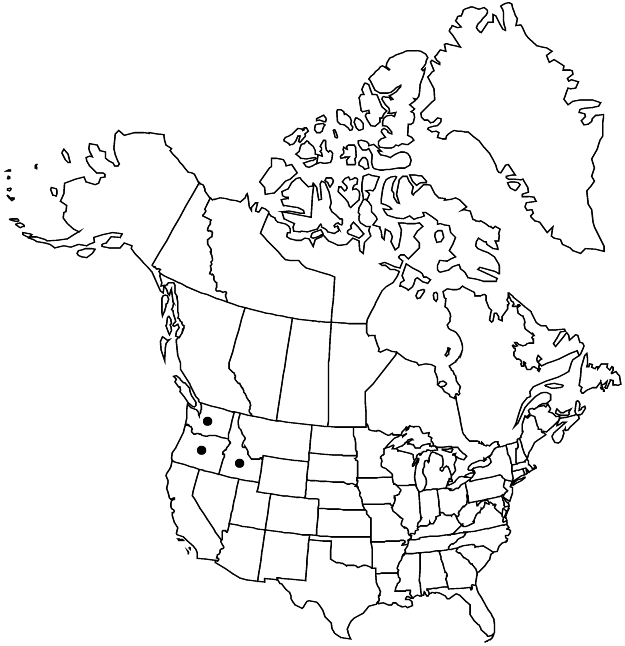Difference between revisions of "Eriogonum thymoides"
in A. P. de Candolle and A. L. P. P. de Candolle, Prodr. 14: 9. 1856.
FNA>Volume Importer |
imported>Volume Importer |
||
| (2 intermediate revisions by one other user not shown) | |||
| Line 1: | Line 1: | ||
{{Treatment/ID | {{Treatment/ID | ||
|accepted_name=Eriogonum thymoides | |accepted_name=Eriogonum thymoides | ||
| − | |accepted_authority=Bentham | + | |accepted_authority=Bentham |
|publications={{Treatment/Publication | |publications={{Treatment/Publication | ||
|title=in A. P. de Candolle and A. L. P. P. de Candolle, Prodr. | |title=in A. P. de Candolle and A. L. P. P. de Candolle, Prodr. | ||
| Line 8: | Line 8: | ||
}} | }} | ||
|common_names=Thyme-leaf wild buckwheat | |common_names=Thyme-leaf wild buckwheat | ||
| + | |special_status={{Treatment/ID/Special_status | ||
| + | |code=E | ||
| + | |label=Endemic | ||
| + | }} | ||
|basionyms= | |basionyms= | ||
|synonyms={{Treatment/ID/Synonym | |synonyms={{Treatment/ID/Synonym | ||
|name=Eriogonum sphaerocephalum subsp. minimum | |name=Eriogonum sphaerocephalum subsp. minimum | ||
|authority=(Small) S. Stokes | |authority=(Small) S. Stokes | ||
| + | |rank=subspecies | ||
}} {{Treatment/ID/Synonym | }} {{Treatment/ID/Synonym | ||
|name=Eriogonum thymoides subsp. congestum | |name=Eriogonum thymoides subsp. congestum | ||
|authority=S. Stokes | |authority=S. Stokes | ||
| + | |rank=subspecies | ||
}} | }} | ||
|hierarchy=Polygonaceae;Polygonaceae subfam. Eriogonoideae;Eriogonum;Eriogonum subg. Oligogonum;Eriogonum thymoides | |hierarchy=Polygonaceae;Polygonaceae subfam. Eriogonoideae;Eriogonum;Eriogonum subg. Oligogonum;Eriogonum thymoides | ||
| Line 39: | Line 45: | ||
-->{{#Taxon: | -->{{#Taxon: | ||
name=Eriogonum thymoides | name=Eriogonum thymoides | ||
| − | + | |authority=Bentham | |
| − | |authority=Bentham | ||
|rank=species | |rank=species | ||
|parent rank=subgenus | |parent rank=subgenus | ||
| Line 53: | Line 58: | ||
|publication title=in A. P. de Candolle and A. L. P. P. de Candolle, Prodr. | |publication title=in A. P. de Candolle and A. L. P. P. de Candolle, Prodr. | ||
|publication year=1856 | |publication year=1856 | ||
| − | |special status= | + | |special status=Endemic |
| − | |source xml=https:// | + | |source xml=https://bitbucket.org/aafc-mbb/fna-data-curation/src/2e0870ddd59836b60bcf96646a41e87ea5a5943a/coarse_grained_fna_xml/V5/V5_734.xml |
|subfamily=Polygonaceae subfam. Eriogonoideae | |subfamily=Polygonaceae subfam. Eriogonoideae | ||
|genus=Eriogonum | |genus=Eriogonum | ||
Latest revision as of 22:13, 5 November 2020
Subshrubs, spreading, polygamodioecious, 0.5–2(–3) × 1–3(–4) dm, tomentose to sericeous. Stems: caudex spreading; aerial flowering stems erect, slender, solid, not fistulose, arising at nodes of caudex branches and at distal nodes of short, nonflowering aerial branches, (0.1–)0.3–0.8(–1.2) dm, tomentose to sericeous, with a whorl of 6–10(–12), leaflike bracts ca. midlength, these similar to leaf blades, 0.3–0.8(–1) × 0.1–0.2 cm. Leaves in compact basal rosettes, fasciculate, and sheathing up stems; petiole 0.05–0.2 cm; blade linear to narrowly spatulate, (0.2–)0.3–1(–1.5) × 0.1–0.2(–0.3) cm, densely white-tomentose abaxially, silky-villous or sericeous adaxially, margins entire, inrolled to tightly revolute. Inflorescences capitate, 0.8–2 cm wide; branches absent; bracts absent immediately below involucre. Involucres 1 per node, turbinate, 3–5 × 2.5–4 mm, villous to sericeous; teeth 6–8, erect, 0.5–1 mm. Flowers 4–10 mm, including 0.5–1 mm stipelike base; perianth white to pale yellow or yellow, becoming pink to rose, villous abaxially; tepals monomorphic, obovate; stamens included to slightly exserted, 2–4 mm; filaments pilose proximally. Achenes light brown, 2–2.5 mm, glabrous except for densely pubescent beak.
Phenology: Flowering Apr–Jul.
Habitat: Sandy to gravelly, often volcanic flats, slopes, and outcrops, mixed grassland and sagebrush communities, montane conifer woodlands
Elevation: (200-)600-1700 m
Distribution

Idaho, Oreg., Wash.
Discussion
Eriogonum thymoides is an exquisite species concentrated in three regions of the Pacific Northwest. The first is along the eastern edge of the Cascade Range from near Wenatchee, Washington (Adams, Benton, Chelan, Douglas, Franklin, Grant, Kittitas, Klickitat, Lincoln, and Yakima counties), to near the Dalles in extreme north-central Oregon (Union County). The second is from Baker and northern Malheur counties, Oregon, to Adams, Canyon, and Washington counties, Idaho. A third series of populations is in the Mount Bennett Hills area of Gooding County, Idaho, and just over the borders in Blaine, Camas, Elmore, and Lincoln counties. Staminate plants tend to have yellow flowers that quickly fade after pollen release. Pistillate plants tend to have white to pale yellow flowers that persist and greatly elongate as the achene matures.
Selected References
None.